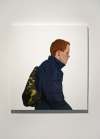A summer of change at the WAG
Indigenous, regional art in focus, along with Chagall's local connection
Advertisement
Read this article for free:
or
Already have an account? Log in here »
To continue reading, please subscribe:
Monthly Digital Subscription
$0 for the first 4 weeks*
- Enjoy unlimited reading on winnipegfreepress.com
- Read the E-Edition, our digital replica newspaper
- Access News Break, our award-winning app
- Play interactive puzzles
*No charge for 4 weeks then price increases to the regular rate of $19.00 plus GST every four weeks. Offer available to new and qualified returning subscribers only. Cancel any time.
Monthly Digital Subscription
$4.75/week*
- Enjoy unlimited reading on winnipegfreepress.com
- Read the E-Edition, our digital replica newspaper
- Access News Break, our award-winning app
- Play interactive puzzles
*Billed as $19 plus GST every four weeks. Cancel any time.
To continue reading, please subscribe:
Add Free Press access to your Brandon Sun subscription for only an additional
$1 for the first 4 weeks*
*Your next subscription payment will increase by $1.00 and you will be charged $16.99 plus GST for four weeks. After four weeks, your payment will increase to $23.99 plus GST every four weeks.
Read unlimited articles for free today:
or
Already have an account? Log in here »
Hey there, time traveller!
This article was published 20/05/2016 (3485 days ago), so information in it may no longer be current.
Six new Winnipeg Art Gallery exhibitions that open over the next four weeks in many ways symbolize a pivot the gallery is making toward regional and indigenous art.
Among the six shows, two will focus on indigenous art and two will showcase Winnipeg artists. Russian-French artist Marc Chagall is the focus of the other two exhibitions, one of which is a series of letters and photographs between Chagall and former WAG director Ferdinand Eckhardt, who was a friend of the 20th-century modernist painter-printmaker.
This summer’s focus on indigenous themes coincides with the WAG’s efforts to begin construction on an Inuit Art Centre, which will be built next door to the existing Memorial Boulevard gallery. The summer shows are part of what gallery CEO and director Stephen Borys calls the “indigenization” at the WAG, which also includes Inuit and aboriginal artworks mingling with Renaissance, baroque and Group of Seven works in the gallery’s permanent collection that are also on display.
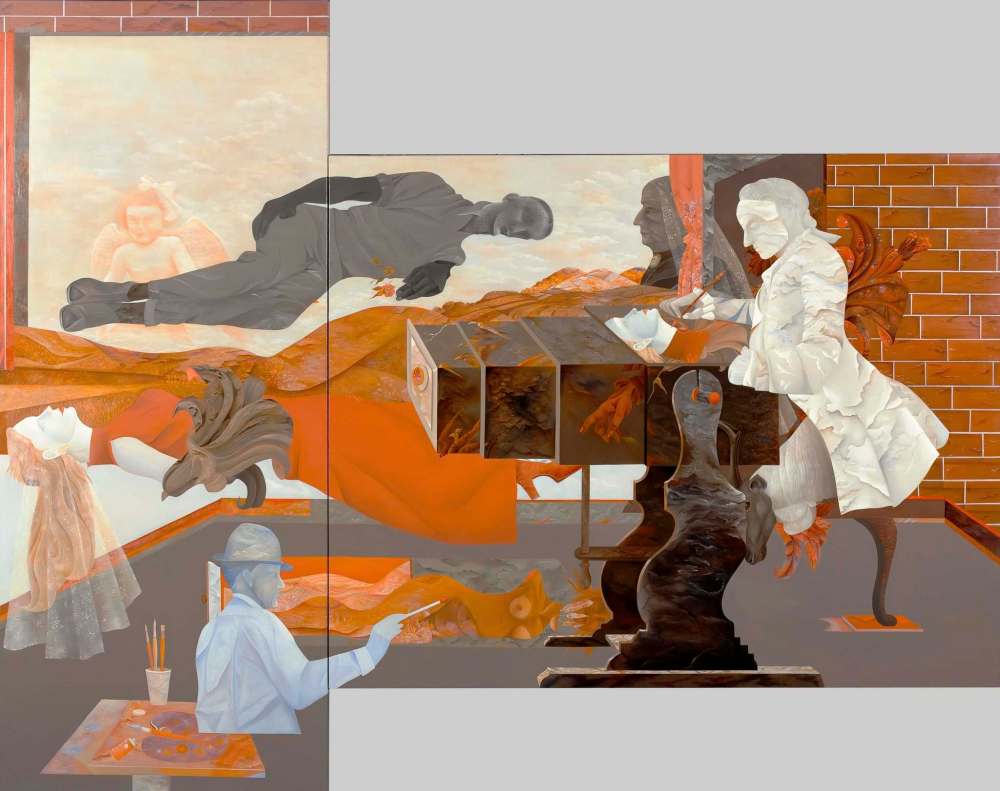
“I like the kind of mix the audience will find… between local art, indigenous art and European art,” Borys says. “This summer going to show an exciting menu from many different cultures and countries.”
The first of the exhibitions launches today with Oviloo Tunnillie: A Woman’s History in Stone, a retrospective of the Inuk stone carver’s career. Tunnillie lived mostly in Cape Dorset, Nunavut, where it was rare for a woman to become a stone carver, says Brenda Coward Wight, the gallery’s curator of Inuit art.
In Inuit culture, women traditionally do the indoor chores while men work outside, Coward Wight says, and female artists in Cape Dorset usually focused on print-making and graphic design because they were indoor pursuits.
“She was a rebel,” Coward Wight said of Tunnillie, who died in 2014. “She just decided she was going to be a carver. To be a female carver (from the North) and achieve international attention is very, very unusual.”
Many of the sculptures also depict southern Canadians, such as social workers and football players, reflecting some of what Tunnillie saw on childhood visits to Toronto while receiving treatment for tuberculosis, and her later years when she lived in Toronto and Montreal, Coward Wight says.
The show, which includes 67 sculptures, takes over the space vacated by Olympus: The Greco-Roman Collections of Berlin, which closed earlier this spring.
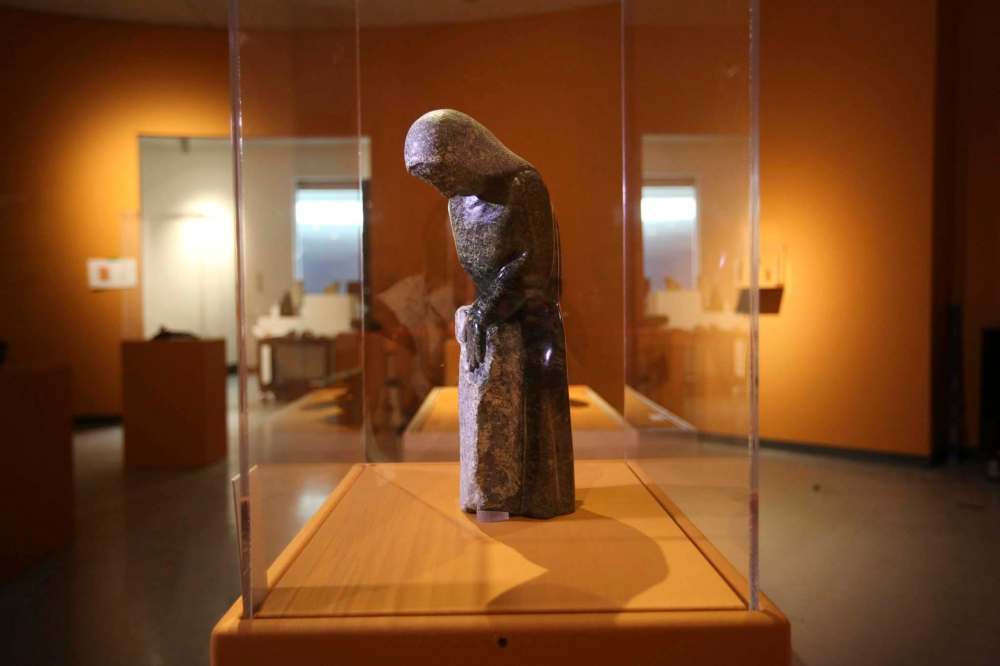
At first glance, there would appear to be few similarities between ancient marble depictions of Zeus and Athena and Tunnillie’s 20th-century works of real people, often family members, usually carved from slabs of dark-green serpentinite.
But Coward Wight says the two had such similarities — Tunnillie is one of the few Inuit artists who has depicted nude subjects, not unlike so many ancient Greek and Roman sculptures — that the gallery considered showing the Tunnillie exhibit at the same time as Olympus, to provide visitors an opportunity to contrast and compare works from different millenniums.
The second indigenous show is Qua’yuk tchi’gae’win: Making Good, which opens June 11 and is curated by Jaimie Isaac, the gallery’s curatorial resident for indigenous and contemporary art. In the Anishnaabemowin language, the show’s title means “the honour of righting a wrong,” and the exhibition is a response to the Truth and Reconciliation Commission of Canada’s investigation of the country’s residential school system. It’s the second show Isaac has curated in the last year, after her WAG debut, We Are On Treaty Land.
“Every show that Jaimie is going to do takes another step at building the dialogue with the aboriginal community,” says Borys. “She’s dealing with important and sensitive subjects and she’s doing that with art.”
Three of the exhibitions open next Saturday, including the two Chagall exhibits. The first, Chagall: Daphnis & Chloé, is a collaboration with the National Gallery of Canada and includes 42 lithographs made in the 1950s, the peak of the modernist’s printmaking career, and are based on the Greek novel from the second century AD.
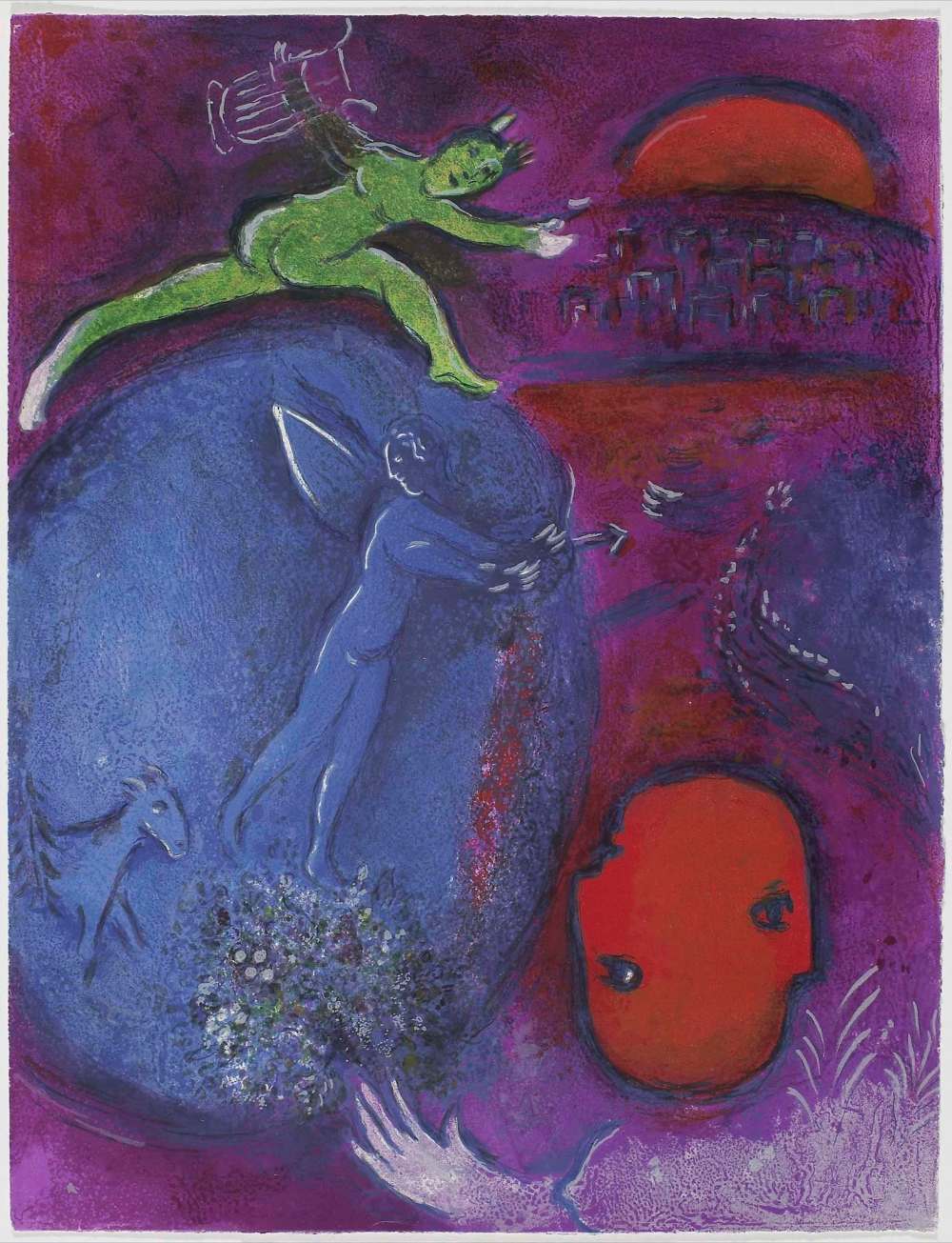
Chagall was known for his vibrant use of colour, and how he moved between the artistic worlds of modernism and abstraction, Borys says.
Chagall created the prints soon after meeting and marrying his second wife, Valentina Brodsky, a close friend of Sophie-Carmen Gramatté, who would marry Eckhardt in 1934 before moving to Winnipeg. Eckhardt befriended Chagall through his wife and the two couples visited each other in France in the 1950s and ‘60s. Chagall & Winnipeg includes letters, photographs of the two couples and artworks.
The other exhibition opening on May 28, Esther Warkov: Paintings 1960s-1980s also has a Winnipeg focus, specifically on the city’s North End. Her paintings show the influence of Jewish folk art from Eastern European immigrants and from modern Jewish artists like Chagall.
Finally, on June 11, a retrospective of another Winnipeg artist, Karel Funk, shows how the layering techniques of Renaissance portraiture can be translated into contemporary subjects. Funk studied in New York and has become a favourite among celebrity art buyers and world famous museums like the Guggenheim and Whitney museums. The WAG exhibit pulls in Funk’s works from across North America.
“It’s a focus on a local artist, a regional artist, who has built an international reputation,” Borys says. “This is a project I really wanted to make happen. It’s a gift not just to the artist but the community at large.”
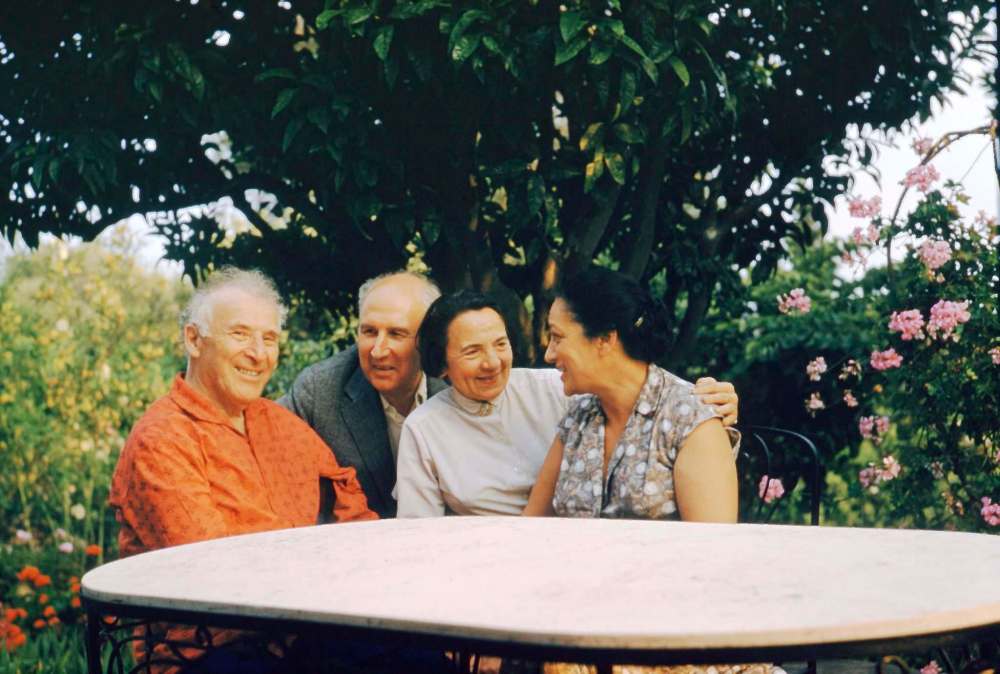
alan.small@freepress.mb.ca
Twitter:@AlanDSmall

Alan Small
Reporter
Alan Small was a journalist at the Free Press for more than 22 years in a variety of roles, the last being a reporter in the Arts and Life section.
Our newsroom depends on a growing audience of readers to power our journalism. If you are not a paid reader, please consider becoming a subscriber.
Our newsroom depends on its audience of readers to power our journalism. Thank you for your support.
History
Updated on Friday, May 20, 2016 1:06 PM CDT: Photos fixed.




